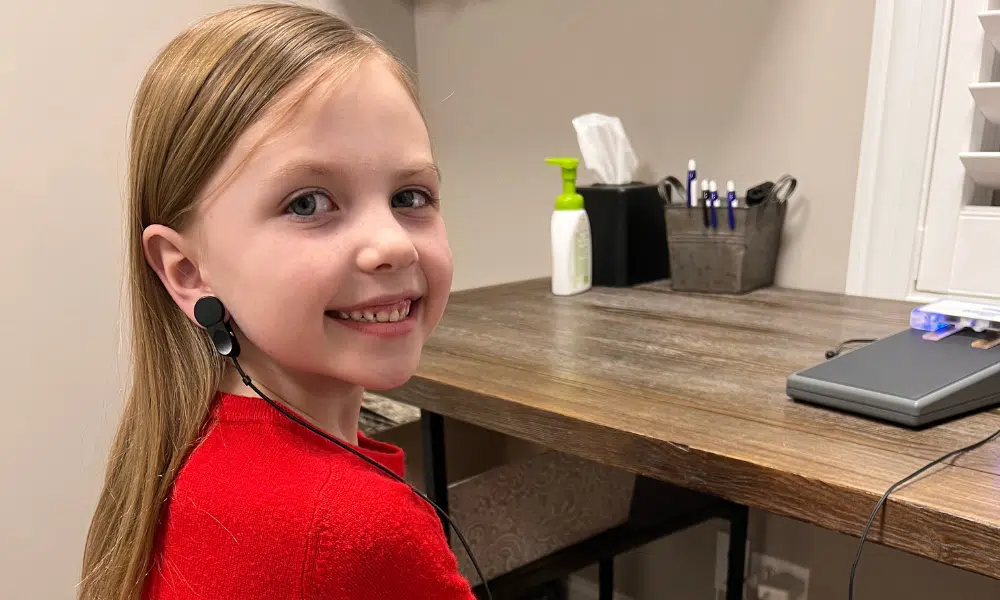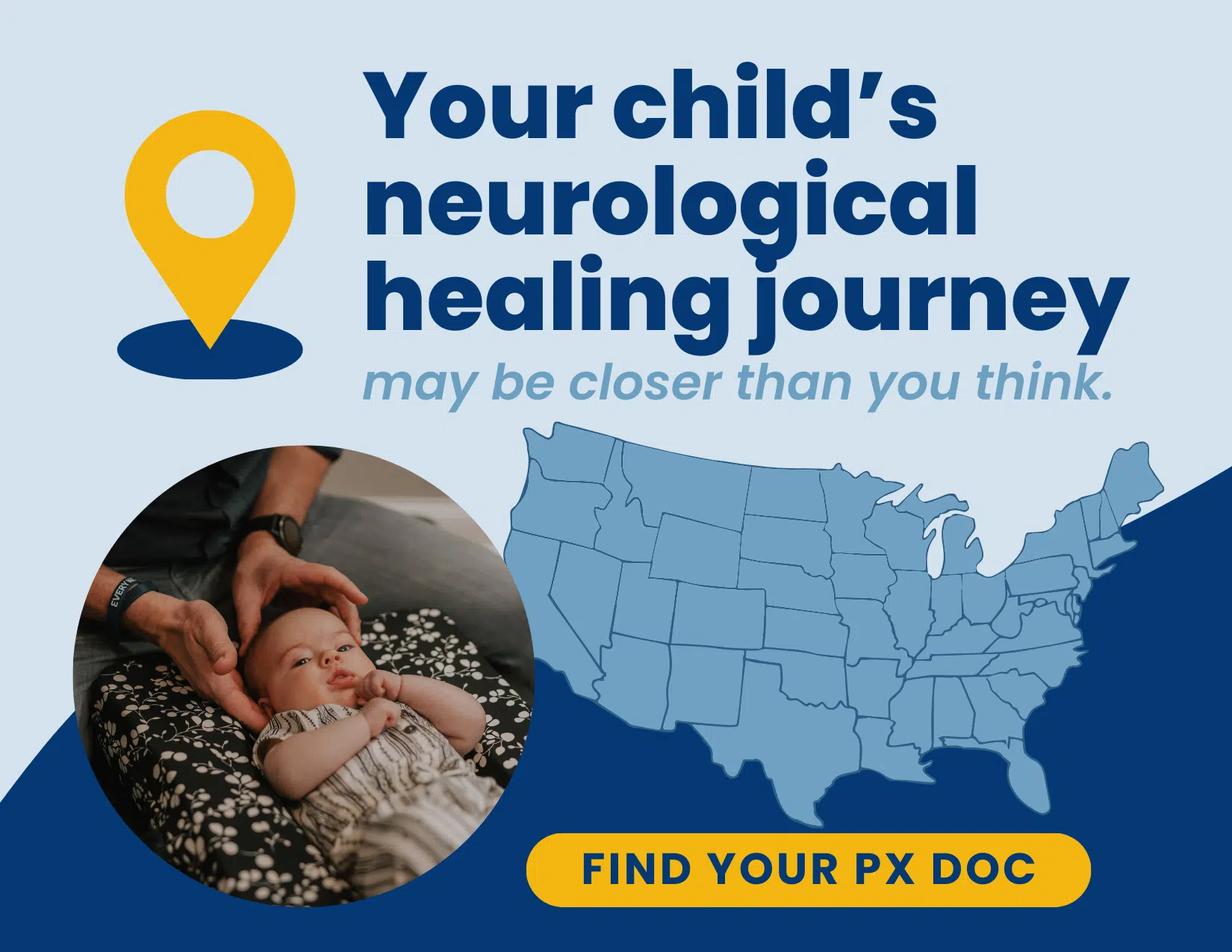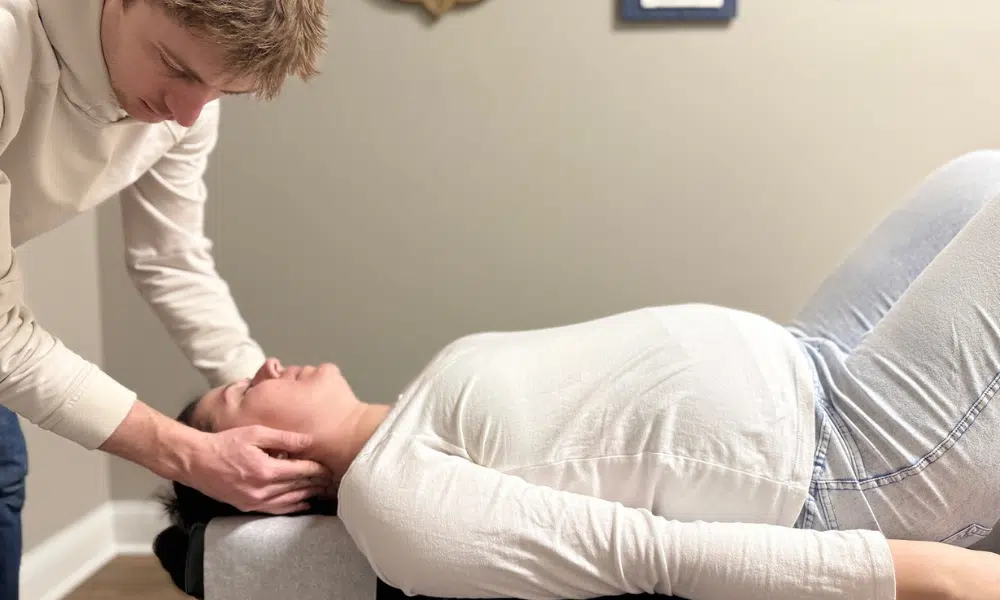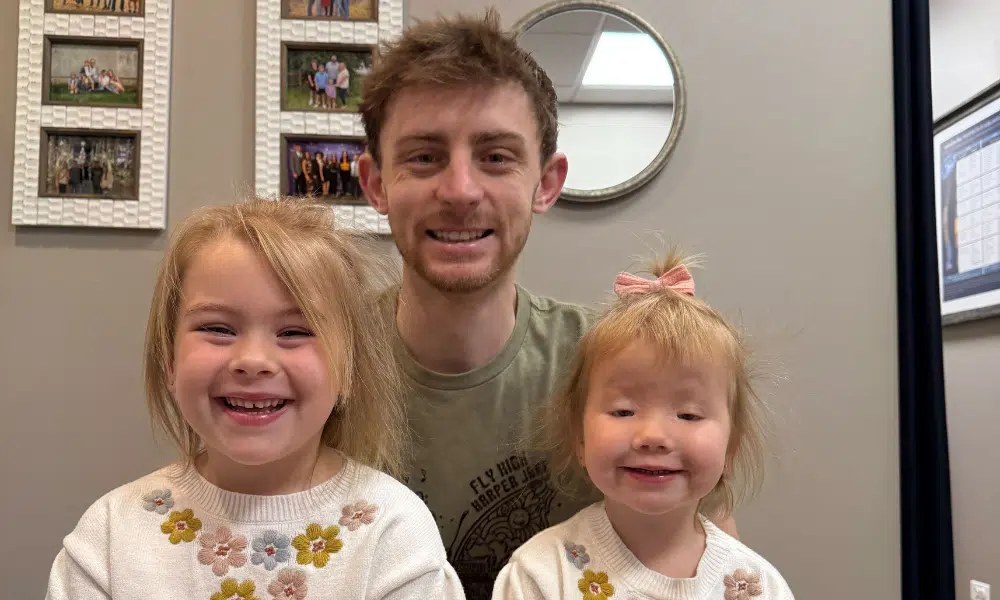For parents, it can be heartbreaking to watch their once active child struggle with tasks that used to come naturally. They may frequently trip and bump into things. Handwriting and artwork become sloppy and require a lot of effort. They avoid sports and playgrounds out of frustration.
If this sounds familiar, your child may be showing signs of dyspraxia, a Developmental Coordination Disorder that affects approximately 6% of school-aged children. And if we “loosen” the criteria just a bit to factor in related factors like poor or asymmetrical posture, disrupted gait patterns, rotational movements, and other sensori-motor disruptions we’ll teach you in this article, it goes way beyond 6% of children – especially those struggling with Autism Spectrum Disorder, ADHD, SPD, and even anxiety.
Dyspraxia impairs the body’s ability to plan and execute smooth, coordinated movements. It can manifest as clumsiness, abnormal posture, gross motor challenges, poor hand-eye coordination, and difficulty with fine motor skills needed for writing or crafts. Children with dyspraxia may also experience language delays, sensory sensitivities, and behavioral challenges.
While physical, occupational, and speech therapies offer coping strategies, these conventional approaches often fall short of addressing the root cause of these perplexing challenges. It’s time to look at dyspraxia through a different lens, recognizing neurological dysfunction as the missing piece of the puzzle.
What is Dyspraxia?
Dyspraxia, also known as Developmental Coordination Disorder (DCD), is a neurological condition that affects the planning and execution of physical movements. It is present from birth, although signs may not be noticeable until a child is old enough to begin reaching developmental milestones.
Dyspraxia symptoms can vary and may include:
- Delayed crawling, sitting, walking, or speech in babies
- Clumsiness, frequent tripping or bumping into objects
- Poor balance, coordination, and posture
- Asymmetrical and inefficient gait and movement patterns
- Difficulty with fine motor tasks like writing, buttoning, or using utensils
- Messy eating and trouble dressing independently
- Language delays and difficulty following multi-step instructions
- Behavioral challenges, low self-esteem, and avoidance of physical activities
As a lifelong condition, dyspraxia continues to impact individuals into adolescence and adulthood. Teens and adults with dyspraxia may struggle with self-care routines, driving, social interactions, and work performance due to ongoing motor skills and planning difficulties. Dyspraxia can co-occur with other neurodevelopmental conditions like ADHD and Autism Spectrum Disorder. In fact, a study suggests that dyspraxia was found in 30-50% of children with ADHD.
Without appropriate support and understanding, dyspraxia can significantly hinder a child’s confidence and development across physical, social, and academic domains. Recognizing the signs of dyspraxia early is essential for helping families access specific therapies and accommodations that can support their children in thriving. Research has shown that early intervention programs significantly increase the likelihood of improving motor and coordination skills in children with dyspraxia.
Conventional Medical View vs a Neurologically-Focused Approach
The conventional medical approach to dyspraxia primarily focuses on managing traits and providing accommodations to help children cope with their coordination challenges. This typically involves a combination of occupational therapy, physical therapy, and speech therapy to improve motor skills, balance, and communication. In school settings, children may receive accommodations such as extra time for written assignments, use of assistive technology, and modified physical education activities.
While these interventions can help children with dyspraxia develop strategies for navigating daily life, they often do not address the underlying neurological dysfunction contributing to their signs. The conventional view tends to see dyspraxia as a standalone condition rather than a manifestation of a deeper imbalance in the nervous system.
Dyspraxia is rooted in a disruption of the complex interplay between the brain, spinal cord, and muscles that enables smooth, coordinated movement. This dysfunction can be traced back to the developing nervous system’s exposure to physical, chemical, and emotional stressors, particularly during prenatal and early childhood periods.
Our Neurologically-Focused Chiropractic approach aims to identify and address the specific areas of subluxation and dysautonomia that are interfering with a child’s ability to process sensory input, plan motor responses, and execute coordinated actions.
By restoring proper communication between the brain and body through adjustments and supporting overall nervous system health, we help children with dyspraxia build a strong foundation for optimal development and function.
The “Perfect Storm” That Causes of Dyspraxia in Children
Let’s go deeper and talk about the “Perfect Storm” of neurological disruptions that begin in the prenatal period and continue throughout early childhood. These events set the stage for the coordination challenges and developmental delays associated with dyspraxia.
The first factor in this “Perfect Storm” is often prenatal stress. When a mother has fertility challenges and/or chronic stress, anxiety, or trauma during pregnancy, her body releases high levels of cortisol and other stress hormones that can cross the placenta and impact the developing fetus. This exposure can alter the programming of the baby’s nervous system, making it more susceptible to dysregulation and sensitivity to future stressors.
The second factor is birth trauma and interventions. Procedures such as forceps delivery, vacuum extraction, and cesarean section can cause physical trauma to the delicate tissues of the neck and spine, leading to misalignments and tension that interfere with normal neurological function. Even just forceful pulling of the infant can cause misalignments, known as subluxations, which can disrupt communication between the brain and body, setting the stage for the motor planning and coordination difficulties seen in dyspraxia.
Early exposure to toxins, antibiotics, and disruptive substances can harm the developing gut-brain axis. The gut and brain are linked through the vagus nerve, and imbalances in the gut microbiome have been associated with various neurodevelopmental conditions. Disturbances in a child’s gut ecosystem from antibiotic use, environmental toxins, or poor diet can negatively affect neurotransmitter production and absorption, crucial for brain development and function.
The cumulative effect of various factors leads to dysautonomia, where the Autonomic Nervous System (ANS) becomes imbalanced and stuck in a “fight or flight” mode. This chronic stress impairs the brain’s ability to process sensory input and execute coordinated movements, contributing to dyspraxia. Understanding these influences helps unravel the complex interplay affecting a child’s development.
Diagnosis of Dyspraxia and What to Expect with Conventional Care
Diagnosing dyspraxia typically involves a comprehensive evaluation by a team of professionals, including pediatricians, occupational therapists, physical therapists, and psychologists. They will assess a child’s gross and fine motor skills, balance, coordination, sensory processing, and cognitive abilities through a series of standardized tests and observations.
Once a diagnosis is made, conventional “treatments” often include:
- Occupational therapy to improve fine motor skills, sensory processing, and daily living activities
- Physical therapy to enhance gross motor skills, balance, and coordination
- Speech therapy to address language delays and articulation difficulties
- Accommodations and modifications in school, such as extra time for writing tasks, use of assistive technology, and adapted physical education
In some cases, medications such as stimulants or antidepressants may be prescribed to manage co-occurring conditions like ADHD or anxiety. However, these medications do not address the underlying neurological dysfunction and can come with a host of side effects, such as sleep disturbances, appetite changes, and mood alterations.
Conventional approaches for children with dyspraxia often help develop coping strategies but fail to address the underlying neurological imbalances. While they may offer temporary relief, these care plans do not promote long-term improvements in function.
Additionally, the many changing medical interventions can overwhelm families, requiring multiple appointments and leading to inconsistent care and frustration with slow progress.
A more drug-free, nervous system focused approach is needed to support children with dyspraxia in reaching their full potential. By addressing the neurological foundation of the condition through precise, gentle chiropractic adjustments and supporting overall nervous system health, we are here to restore the brain-body connection and unlock the child’s innate capacity for growth, development, and coordination.
PX Docs’ Neurologically-Focused Approach
At PX Docs, we take a unique approach to supporting children with dyspraxia by focusing on the neurological roots of the condition. Our care plans are designed to identify and address areas of subluxation and nervous system dysregulation that may be impeding a child’s ability to process sensory input, plan motor responses, and execute coordinated movements.
We utilize state-of-the-art technology, such as INSiGHT scans, to detect specific patterns of neurological stress and dysregulation. These scans provide valuable insights into the functioning of a child’s autonomic nervous system, allowing us to pinpoint areas that may benefit from targeted interventions.
Below is an initial NeuroSpinal EMG Scan Series on a child struggling with dyspraxia, autism, and ADHD-like challenges for many years. The increased colors of blue, red, and even black in the cervical and thoracic (upper) regions of the upper left Amplitude scan indicate significant levels of subluxation, hypertonicity, and neuromuscular tension in those areas.
Additionally, if you look at the areas circle in red in the lower two scans you’ll see that this child struggled with collapsed, exhausted posture where his head and heck hung forward in a “text neck” posture, and was also wildly asymmetrical (imbalanced). Then the numbers circled on the bottom right both being well below the optimal goal of 75-80 or above, indicate this child has significant neuromotor tone, coordination, and symmetry challenges very commonly seen as the root cause of dyspraxia.
By addressing and adjusting these subluxations and neuromuscular distortion patterns, we were over time able to bring about improved posture, symmetry, gait, coordination, and movement patterns in a major way for this patient. This led to vastly improved mental, cognitive, and emotional regulation functions as well, leading to an overall improved quality of life through chiropractic care that had not been previously achieved with years of physical and occupational therapy, medications, and other interventions.
Empowering Parents and Patients
We believe that empowering parents and patients with knowledge and resources is essential for creating lasting change. We strive to educate families about the neurological basis of developmental dyspraxia and the importance of addressing the root cause of the condition rather than just managing traits.
We empower parents to become advocates for their child’s care, armed with the understanding that supporting nervous system health is the foundation for optimal development. We provide tools for tracking progress and celebrating milestones, such as improvements in coordination, cognitive clarity, and emotional regulation!
By shifting the focus from limitations to possibilities, we help children with dyspraxia unlock their full potential and thrive! This is the foundational difference between our approach and more traditional, medical approaches to care for your child.
Your Child’s Potential to Thrive
Dyspraxia is a complex neurological condition, and parents should understand all options to caring for their child with dyspraxia. We find again and again that the foundational missing link to getting optimal results is adding in Neurologically-Focused Chiropractic Care.
By addressing the “Perfect Storm” of factors that contribute to dyspraxia and supporting the nervous system’s natural capacity for healing and restoration, we can help children overcome their challenges and embrace their unique abilities!
We are here to provide families with the care, knowledge, and support they need to navigate the journey of dyspraxia with confidence and hope. Our compassionate network of family chiropractors is dedicated to helping children with dyspraxia unlock their full potential and thrive in all aspects of life!
If you suspect your child may be experiencing signs and symptoms of dyspraxia, or if you’re seeking a drug-free approach to care, visit the PX Docs directory to find a qualified provider near you.
Together, we can embark on a path of healing, growth, and transformation, one step at a time!





